Guide D-703
Revised by Robert G. Hagevoort, Molly A. Smith and Francisco A. Rivera
College of Agricultural, Consumer and Environmental Sciences, New Mexico State University
Authors: Respectively, Extension Dairy Specialist, Program Coordinator, and Graduate Student, all of the Department of Extension Animal Sciences and Natural Resources, New Mexico State University. (Print Friendly PDF)
Dairy goats do not require elaborate housing. Old buildings can be remodeled to reduce costs. The essential requirement is a dry building that is well-ventilated and free from drafts, especially in the winter months when the does are kidding. Dairy goats can withstand a considerable amount of dry cold if they are kept free from drafts. Despite their hardiness, however, goats are vulnerable to respiratory infection and hypothermia in wet and drafty conditions. The two principle housing designs for goats are open housing and confinement housing.
Open Housing
Open housing, also referred to as loose housing, may be used successfully in the Southwest. This type of housing allows goats to have protection from weather conditions while having open access to pasture.
Ten to fifteen square feet of bedded area is adequate for each adult goat to be housed, depending on size. An additional 25 square feet of inside or outside space per goat should be provided for exercise. Separate pens for kidding should provide a minimum of 4 by 5 feet of bedded area.
A single shed with three enclosed sides is satisfactory. The fourth side, facing toward the south or away from prevailing winds, should be open. The open side may be equipped with panels or overhead doors that can be shut in case of extreme weather. Some type of bedding, such as wood shavings, sawdust, or straw, should be used. Creating a bedded pack by adding more bedding on top of the existing bedding reduces the frequency of manure removal required. It is important that the top of the pack stays dry to provide dry conditions for the animals. Wet bedding can accumulate bacteria, parasites, and worms, as well as producing odors and harmful gases. If the shed is used as a shade in the summer, removable panels will increase air movement. Some shade should be provided in extremely hot weather. The advantages of open housing are obviously the limited costs, along with easier cleaning and manure removal with machinery and much better air circulation and ventilation.
Confinement Housing
Confinement housing for dairy goats can be a remodeled barn or other structure to provide shelter for goats, or a barn or stall facility specifically designed for housing and managing larger numbers of goats. An outdoor lot is not an absolute requirement, but it is beneficial to have a separate space for exercise, which should provide a minimum of 25 square feet per animal. With the recent growth in the beef and dairy goat industries, free stall and tie-stall housing similar to bovine dairy operations have been designed for goats.
Ventilation in confined housing is extremely important to provide adequate airflow. As shown in Figures 1 through 4, free stall facilities provide inside space that can be opened up for additional airflow in the summer months or lowered to keep out the cold and wind during the winter months, while still providing the animals with exercise space. Fans spaced throughout the facility provide additional airflow and can be set with the help of a thermostat to turn on and off at certain temperatures. Manure lanes can be kept clean mechanically with scrapers as well as with the help of a flush system. Make sure you comply with state requirements for manure storage and management; inquire with the New Mexico Environment Department for specific permit requirements.
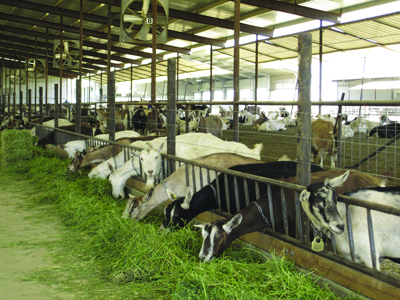
Figure 1. Dairy goats housed in a free stall barn. Goats can be either locked out
or locked in the feed alley for management and cleaning purposes.
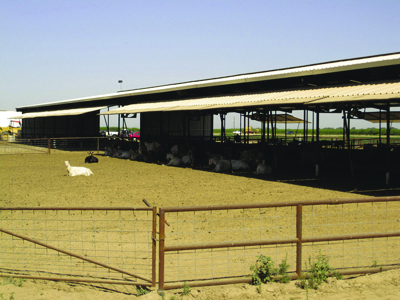
Figure 2. Exercise lots provide inside shaded and outside space for goats to roam.
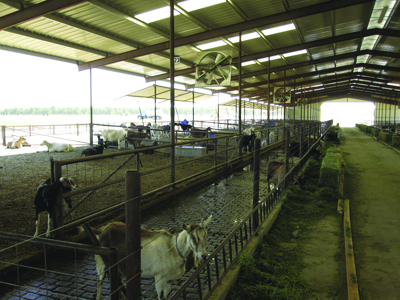
Figure 3. Automatic water troughs are provided in between pens. Fans are installed in
this facility to provide additional airflow for goat comfort in the summertime. Also note
the grooved concrete design in the feed alley to provide better traction for the animals.
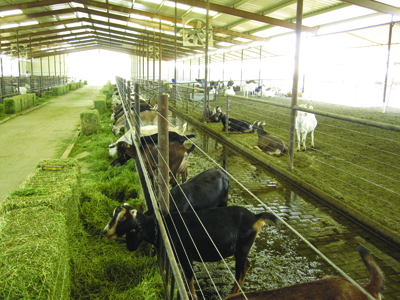
Figure 4. Note the additional wires above the stanchions to prevent goats from jumping out of the corrals.
Feed and Water Facilities
A supply of fresh, clean water should be available at all times. Many dairy goat owners use small water containers and clean them daily. In cold weather, goats will relish warmed water. Increased water consumption will greatly aid in maintaining production.
Goats are fastidious eaters (contrary to popular belief). They do not readily consume dirty, moldy, or contaminated food. Hayracks should be used to reduce waste. They should be cleaned out regularly if there is any build-up of refused feed. In freestall barns, feeding areas can be managed easily from the center of the barn, and hay and grain can be fed as needed depending on the nutritional requirements of the animals. It is easier to clean feeding areas in these kinds of facilities. Additionally, lactating goats, does about to kid, and young bucks can be managed and fed accordingly in separate pens throughout the facility (Figure 5).

Figure 5. Showing separate corral space in free stall facility for bucks (left) and does (right).
Milking Barn
Healthy goats, clean milking stalls, clean equipment, clean udders and flanks, and a clean milker all aid in producing high-quality goat milk, minimizing the chances for contamination from dirt and bacteria. Milking facilities can range from a simple building and milking setup, as shown in Figure 6, to elaborate and modern rotary parlors like those used in bovine dairy production (Figures 7, 8, and 9).

Figure 6. Goat milking stand showing stanchion, feedbox, railing, and ramp.
Dimensions on these drawings can be used as a guide for building a milking stand.
The upper drawing shows construction of framework without flooring boards.
Bolts at top of stanchion pull out so that uprights can be spread apart to admit the
doe's head. Then bolts are put back, and the uprights hold the doe in place. The
lower drawing shows the finished stand. For the platform, cross supports, feedbox,
ramp, and ramp cleats, use 1-inch-thick boards. Use 2- by 4-inch lumber for leg braces
and ramp frame. Use 4- by 4-inch lumber for leg frame.

Figure 7. A modern rotary milking barn.
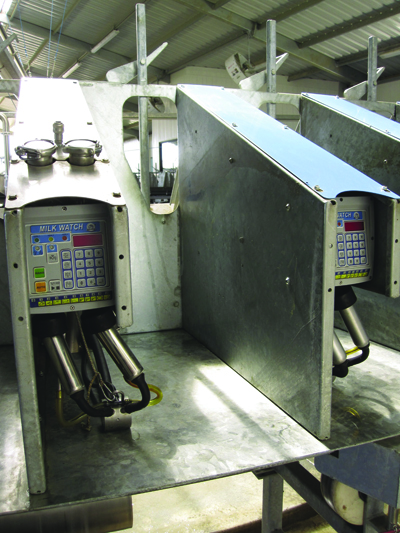
Figure 8. A modern milking station with computerized milk metering.
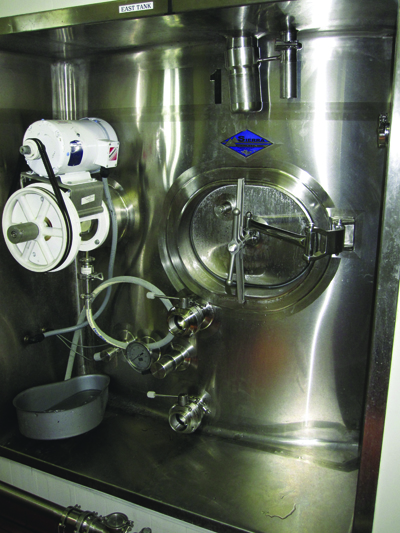
Figure 9. Cooled storage facilities for milk.
If a Grade A milk production unit is planned, the New Mexico Department of Agriculture Dairy Division should be contacted. Current sanitation requirements must be met for the milking barn as well as the storage and processing facilities.
Many commercial dairy goat facilities obtain their own pasteurizing equipment to fully control the quality assurance QA process prior to marketing their products as Grade A pasteurized goat milk or processing the milk into goat cheese.
Fences
A permanent goat-proof fence is essential. A few goats allowed to run loose can do a great deal of damage in a short time. Fencing for goats is not a simple task; some goats seem more receptive than others to being fenced in. Four-foot-high woven wire with a board or barbed wire on top should be adequate. Using barbed wire does present some danger to goats, but if dogs or coyotes are a problem, the barbed wire on top may be necessary.
Some goats will get out of nearly any fence. In this event, place overhanging wire on top of and inside the fence. This wire may be electric if necessary. An electric fence is satisfactory for a temporary fence or to divide pastures. An electric controller should be of a reputable make, and you should follow the manufacturer's instructions.
Either metal or wooden posts are satisfactory. It is very important that the corner be well braced to keep the wire tight. All braces should be on the outside of the woven wire; otherwise, some of the goats may run up them and jump over the fence.
Original author: Borden Ells, Extension dairy specialist.

Robert Hagevoort is an Extension Dairy Specialist at New Mexico State University. A native of the Netherlands, he earned his M.S. and Ph.D. from Texas A&M University. He works closely with the dairy industry in New Mexico and throughout the Southwest to provide information on dairy management, regulatory issues, and other factors that affect dairy producers.
To find more resources for your business, home, or family, visit the College of Agricultural, Consumer and Environmental Sciences on the World Wide Web at pubs.nmsu.edu
Contents of publications may be freely reproduced for educational purposes. All other rights reserved. For permission to use publications for other purposes, contact pubs@nmsu.edu or the authors listed on the publication.
New Mexico State University is an equal opportunity/affirmative action employer and educator. NMSU and the U.S. Department of Agriculture cooperating.
Revised and electronically distributed March 2011, Las Cruces, NM


